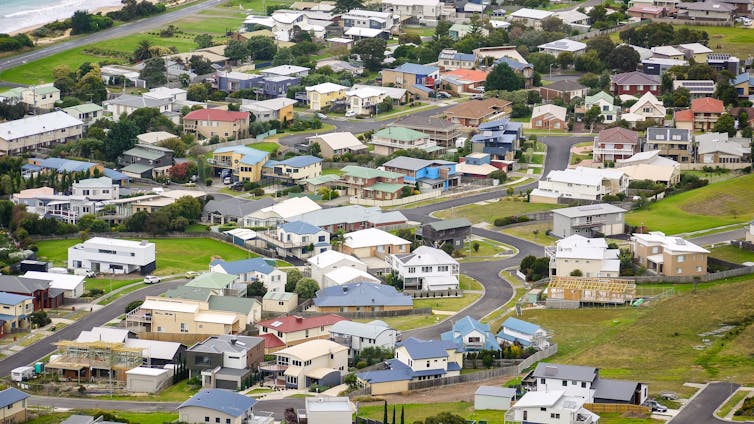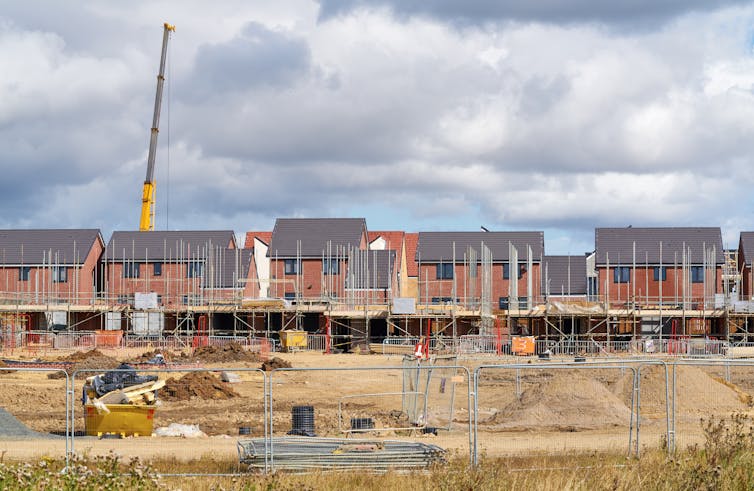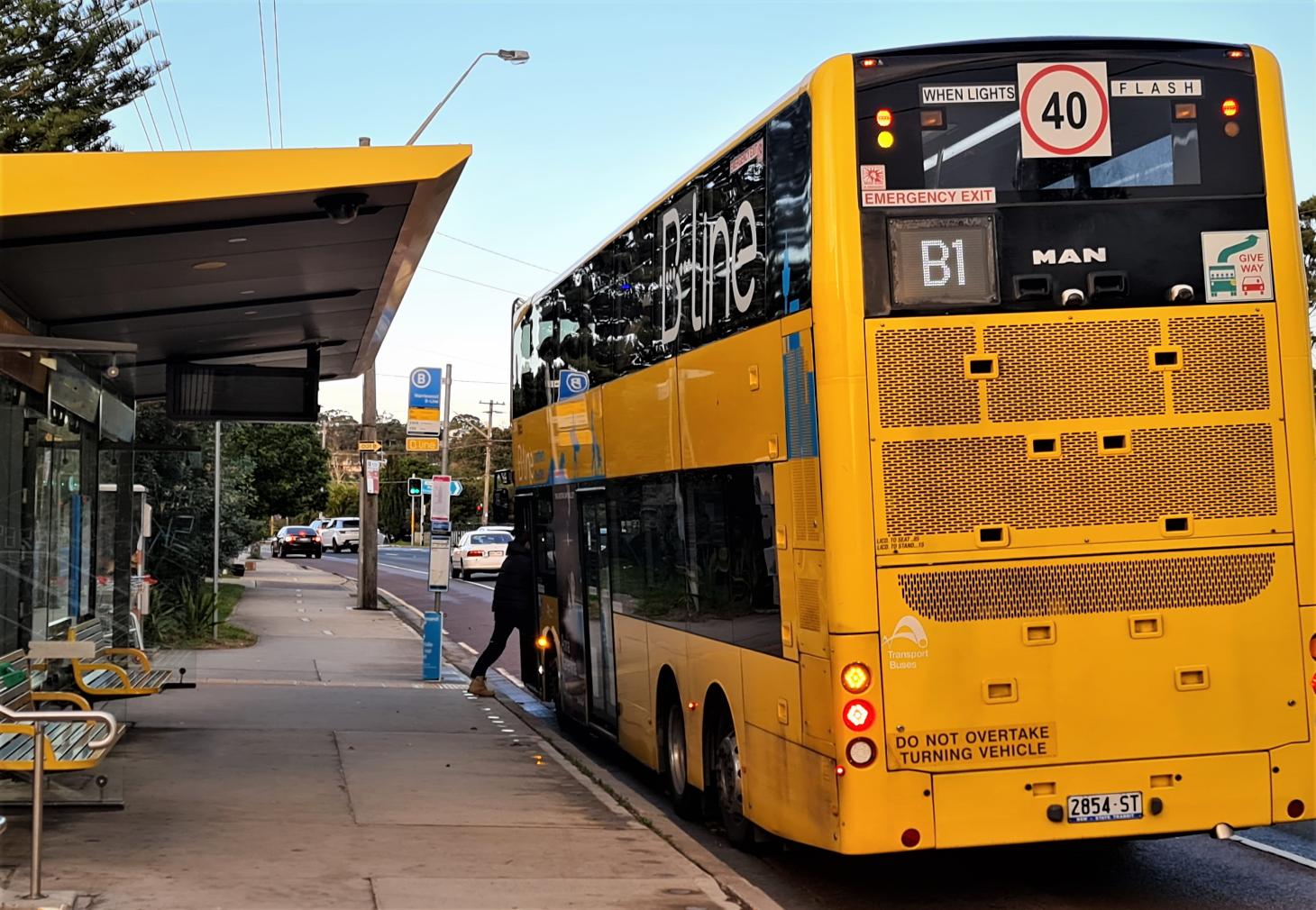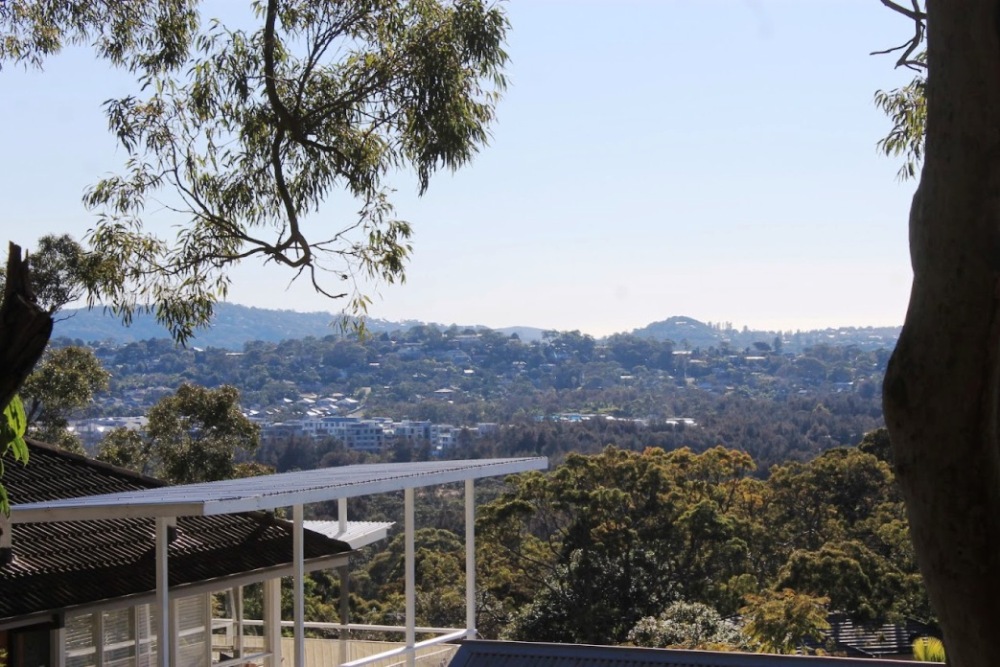Reports have come to hand that Keolis Downer Northern Beaches is seeking drivers to return overpaid wages, in some instances, up to thousands of dollars.
As there have been widespread reports of the low rate of wages being a primary factor in being unable to attract drivers to the now privatised bus routes, and the subsequent cancellation of services that has resulted, the payroll problems present a new aspect of what has happened since the privatisation of public transport services.
On March 6 2024 the Rail, Tram and Bus Union NSW Branch advised members:
'Keolis Downer Northern Beaches continues to engage with members in accordance with the recommendation put forth by the Fair Work Commission.
Numerous members have sought further clarification and elaboration regarding the ongoing audit/review, exercising their rightful entitlement to information.
Reports from both our members and local delegates indicate persistent challenges and ongoing dissatisfaction with the process, which is concerning.
While we acknowledge the company’s prerogative to seek repayment of any overpayments, our observations continue to highlight a pattern of errors and discrepancies on the part of the employer.
Consistently, we have emphasised that if there is any uncertainty regarding the alleged overpayment as communicated by KDNB, individuals should refrain from repayment. Moreover, if there is a lack of support from management concerning out-of-pocket expenses, the necessity for repayment is called into question. Furthermore, individuals who have previously repaid amounts must ensure that these transactions are documented.
In essence, our stance remains clear:
- If uncertainty persists, refrain from repayment.
- In the absence of management support regarding out-of-pocket expenses, refrain from repayment.
- Ensure that any previously repaid amounts are accurately reflected in documentation before considering further repayment.
The RTBU is currently in consultation with our legal team in preparation for our forthcoming report to the Fair Work Commission.'
In May 2021, Keolis Downer Northern Beaches Pty Ltd (a subsidiary of Keolis Downer) was awarded a contract to operate and maintain bus services on Sydney’s Northern Beaches and the Lower North Shore by Transport for New South Wales for eight years, starting 31 October 2021.
As a result of that contract award, a transfer of business occurred and three State awards, transferred to Keolis Downer and became copied State awards for the purpose of the Fair Work Act 2009 (Cth) (Fair Work Act).
Two of the copied State awards remain in force and were then applicable to the Keolis Downer workforce:
a. State Transit Authority Senior and Salaried Officers’ Enterprise (State) Award 2021 (SAT Senior and Salaried Officers Award); and
b. State Transit Authority Bus Engineering and Maintenance Enterprise (State) Award 2020 (SAT Bus Engineering Maintenance Award) (together, the Copied State Awards).
The Copied State Awards confer wage increases that took effect in the first half of 2022. Specifically:
a. The SAT Senior and Salaried Officers Award had a 2.04% increase that was applicable from 1 January 2022 for all employees under the Award; and
b. The SAT Bus Engineering Maintenance Award had an increase of 2.04% on 1 April 2022 for all employees under the Award.
At the Annual Wage Review 2021-2022 Keolis Downer submitted that employees covered by the Copied State Awards have received and maintained a safety net of fair minimum wages for 2022 in light of the pay increases that had already been implemented.
'As such, the obligations under section 248 of the Fair Work Act have been satisfied in relation to these employees.' the KD submission stated
'Given the increases provided for under the Copied State Awards, Keolis Downer submits that the Fair Work Commission should exercise its discretion to make a determination varying minimum wages in the Copied State Awards under Item 20 in Part 5 of Schedule 9 of Fair Work Act (Transitional Provisions and Consequential Amendments) Act 2009 (Cth) taking into account the relevant pay increases outlined ... above.
'In circumstances where the minimum wage objective has been met and employees covered by the Copied State Awards have received a pay increase, Keolis Downer submits that employees under the Copied State Awards should be excluded from the minimum wage increase in the 2021-2022 Annual Wage Review Decision to prevent a ‘double dipping’ on wage entitlements.
'In the alternative, and in the event that the Fair Work Commission does not agree with our primary submission, Keolis Downer submits that the increase applied to the Copied State Awards should only be what is required to ‘top up’ the increase under the Copied State Awards to match the minimum wage increase in the Annual Wage Review Decision.' the submission reads
'Keolis Downer reserves its position to provide more fulsome submissions regarding this matter and to be heard before the Expert Panel in respect of the Annual Wage Review 2021-22. '
Over the twelve months to the March 2022 quarter, the CPI rose 5.1%. Over the twelve months to the December 2022 quarter, the CPI rose 7.8%.
The Annual CPI inflation was 3.6 per cent in the March 2024 quarter, lower than the 4.1 per cent annual rise in the previous quarter. This marks the fifth consecutive quarter of lower annual inflation since the peak of 7.8 per cent in the December 2022 quarter.
On February 11, 2022 the RTBU reported to members:
It has been 3 months since Keolis Downer took over from STA and Members have told us that all outstanding payroll issues need to be fixed now, or at the very least for KD to be held accountable to a timeline to address the payroll issues.
The union met with KD management last Friday 4 February to discuss the following payroll issues:
- Resolution of Outstanding Payroll Queries
- Payslip Readability
- Pay Code/Interpretation
- Leave Balances
- Access to a Payroll Officer
Members can read KD’s commitments in the Member Bulletin. KD proposed a timeline until end of April 2022 to address all the outstanding payroll issues. The union has agreed, and KD have indicated that some issues may be rectified sooner. If KD fail to meet their timeline, then your union will escalate the matter further.
Your delegates are working on the ground to assist KD in achieving outcomes as quickly as possible. Once all the above issues have been addressed, KD will perform an audit on all employees to determine underpayments or overpayments. Please see your delegate if you happen to be one of those identified in this audit.
On February 25, 2022 the RTBU reported to members:
Your union representatives met earlier this week with Keolis Downer Northern Beaches to discuss KDNB’s understanding of converting members Annual Leave/Long Service Leave that they had with STA from days into hours.
KDNB was of the understanding that each day was only worth 7 hours and 36 minutes but paid at 8 hours. Therefore, if you had 10 days transferring across from STA, KDNB would convert that into only 76 hours instead of 80 hours.
Your union explained to KDNB that those calculations were incorrect, and each A/L or LSL day should be calculated as 1 day = 8 hours. After further investigation, KDNB have confirmed that they will now convert all STA LSL and A/L days as 8 hours per day. E.g., 10 STA days will be converted into 80 hours.
PLEASE NOTE: That if you have any issues with your pay, your first port of call needs to be your payroll officer (or in the interim till the end of March, the HR personnel located in each depot) and if you are unhappy with their explanations, then raise the matter with your local delegate who will assist you from that point.
Problems with privatisation are the Contracts signed by last state government: RTBU
Greater Sydney Bus Contract Seven, covers part of the lower North Shore and North West suburbs, stretching to Ryde and Parramatta.
In July 2021 the contract was awarded to Busways North West for an eight-year term commencing in January 2022.
On April 5 2024 the RTBU reported to members (Re: Busways update):
'We find ourselves in a new phase of our ongoing battle for equality in the Busways workplace. Recent meetings with the Transport Minister and Premier have revealed that while they express a desire to resolve the issues in Region 7, they claim to be unable to do so. TfNSW has provided what appears to be a water-tight reason, stating that the contract prevents them from taking action. Once again, the consequences of privatisation leave us at a disadvantage, with the responsible agency able to say, “We’d really like to help, but…”.
It is not good enough. Labor made commitments to our members and the community and they need to keep them, even if it means tearing [up] the contracts.
As usual, it falls upon the union to find the best solution we can to this mess. In our lobbying efforts with the government, given they’re not going to do the right thing by our members in Region 7 we have shifted our focus to advocating for a return to a government operator.
The company has also applied to the Fair Work Commission (FWC) to have our Enterprise Agreement conciliated, which is the first step towards potential arbitration. Arbitration involves presenting arguments for each clause to an FWC representative, who then makes the final decision. As a union, we generally try to avoid this scenario, as it takes bargaining power away from the workers. However, in this case, it seems unavoidable.
We are currently trying to get the deal that was done in Region 6. This would stop two-rosters and bring everything attached to the rosters up to the ex-STA level. Examples of this is shift length, penalties, standing time, wages, etc. The focus is on first making sure that what workers earn day to day is the same.
Once that is done then we’ll be looking at things like differences in sick leave, annual leave, long service leave etc. It is not going to be possible to get everything done in one hit, so like in Region 6 we’ll have to do it across a period of time but we WILL be getting that done.
It is important to note that during the arbitration process, we are prohibited from taking industrial action. Due to the complexities of bargaining for separate workgroups under one EA when one group is still on a valid EA, industrial action has not been a viable option thus far. While we were exploring a few other directions, the conciliation application has now locked us into this path.
We’ve had one meeting so far with the FWC and the company where we put this forward as the minimum we could accept; we’ve seen the damage done to members and their families by a two roster system and it has to be avoided at all costs.
If the company comes to the next meeting later this month and says they can’t do this, then we go to arbitration and roll the dice on everything. Lawyers will be running that argument on our behalf if it happens.'
Is 'a Living Wage' leaving people homeless?
The ongoing problems KDNB has worked to overcome highlight an ongoing problem young workers, young families and even individuals have been pointing to for years now - the minimum wage does not allow people to live well in Sydney or even near where they work due an imbalance between what is coming in as a wage and what goes out as costs of living. Many state they are one pay-packet away from living on the streets and if they cannot attend work due to illness, they are immediately in debt.
As the cost of living increases, individuals, communities and companies are still asking; are companies better off ensuring wages increase to meet rising living costs to retain staff and increase their market long-term viability and social licence, adopting and keeping to a 'sustainable development' protocol - or should the penultimate mandate still be profit at all costs, despite the fruit of such seeds causing the fragmentation, reduction and loss of quality of goods, services and increasing the number of individuals and families who must choose between eating or a roof to provide shelter from the rain.
The KDNB payroll issues are one example of undertaking a highly stressful job which is not reflected in the rate per hour - a labourer in construction earns far more with far less stress.
The award rate for State Transit Authority bus drivers is $24.784 per hour for trainees and $26.653 per hour once qualified. Casual public bus drivers receive $28.273 per hour. Private bus companies pay as little as $22.500 per hour with fewer benefits, due to Workplace Agreements, those working in the industry have stated.
As of April 2024 the average annual salary for Bus Driver jobs in Sydney ranges from $75,000 to $85,000.
KDNB currently list 'Attractive remuneration and benefits potentially earning $70k-$90k (Full time average)'.
In a
March 2023 ABC report, '
Trainee bus driver slams Keolis Downer for inadequate training amid Sydney shortage', a trainee, 'David', stated the "The pay is actually $50,000 a year,"
.
For the 6 months ended 31 December 2023 Downer EDI reported total revenue of $6.0 billion, down 1.9% on prior comparative period (pcp) and a statutory profit after tax (NPAT) of $72.1 million, up 5.9% on pcp.
As of 1 July 2023 the National Minimum Wage is $23.23 per hour or $882.80 per week. Employees covered by an award or registered agreement are entitled to the minimum pay rates, including penalty rates and allowances in their award or agreement. These pay rates may be higher than the National Minimum Wage.
Individuals need around $85,000 per year to live comfortably in Sydney. While you can live in Sydney with a lower income as well, you need to spend mindfully and compromise on a few things such as entertainment.
The average cost of living for a family of four in Sydney is roughly around $10,167 per month, including rent.
In November 2023 research stated a six-figure salary is needed by Australians to buy a home comfortably.
The research from Suburbtrends used the internationally recognised “median multiple”, which measures housing affordability by dividing the median house price by the gross median household income.
After analysing more than 22,000 property sales of both houses and units across the country, the researchers found that Australia’s median multiple is 9 to 1, meaning the median house is more than nine times pricier than the typical Aussie’s household income.
It is a figure far removed from the gold standard of 3.0, which is the median multiple that is generally considered to allow for broad homeownership across many income groups, rather than just among high earners or those already well-off.
“To attain the ‘affordable’ median multiple of 3.0, Australian households would need to earn an average income of $301,769, highlighting a market that favours the wealthy,” Suburbtrends’ report read.
The three least affordable regions in Australia were all in Sydney. Suburbtrends found that Sydney's northern beaches residents needed an annual income of $600,000 to meet a median multiple of 3.0.
This scale effectively locks the next generation out of the housing market.
In the case of those working full-time as bus drivers they would need to live outside our area to be able to house themselves, in rental accommodation, and eat.
The only places where housing affordability was on par with Australia’s actual median income, around $95,000 per year, were the outback regions of Queensland and South Australian.
On April 24, 2024
Suburbtrends released their report '
Suburbtrends Rental Rewind: 3 Years of Vanishing Affordable Rentals' states;
'The updated analysis of rental market trends from March 2021 to March 2024 across both Greater Capital City Areas (GCCA) and regional areas reveals a significant reduction in the availability of rentals priced at $400 per week or less, which holds profound implications for housing affordability and broader socio-economic dynamics.
In major urban centres like Sydney, where affordable rentals under $400 have drastically fallen from 21% in 2021 to 3% in 2024, the trend is stark.
This contraction in affordable rental options is especially significant given that a household earning a modest income of $70,000 per year, which is typical for many Australians, would find rents above this threshold increasingly unaffordable. The standard affordability measure suggests that no more than 30% of household income should be spent on housing costs, making higher rents unsustainable for low-income earners.
Moreover, the decreasing availability of low-cost rentals is likely to exacerbate social inequalities and contribute to a rise in housing insecurity and homelessness. It stresses the need for urgent policy interventions to increase the supply of affordable housing. While construction costs and standards contribute to higher rental prices, innovative solutions such as subsidies, tax incentives for low-cost housing developments, and revisions in planning regulations may be necessary to address the affordability crisis.'
The current average rent for Sydney's northern beaches is $700 per week for a unit while the median rent in for houses is $1,300 per week, according to
realestateinvestar.
Sydney's northern beaches has a population of 252,878 people of which 23.60% of residents live in rental accommodation.
The median listing price for units in this area is $1,100,000 and this has changed 11.11% over the past year, while the median listing price for houses is $2,500,000 and $1,700,000 for townhouses.
March 31 2024 Bus timetable changes
Keolis Downer Northern Beaches stated:
In response to ongoing bus driver shortages that have impacted the bus industry across Sydney, Keolis Downer Northern Beaches in conjunction with TfNSW have adopted a temporary, adjusted timetable for bus services in the Northern Beaches and Lower North Shore since July 2023.
Since July last year, Keolis Downer have successfully attracted a significant number of drivers to its workforce. Keolis Downer are therefore in a position to work with Transport for NSW to reinstate bus services across the region, prioritising services that the community needs.
A new timetable will be implemented on the 31 March 2024. Keolis Downer will be reallocating resources to cater for the main corridors of the region. This will mean 146 more trips each week on the ever-popular B-Line – including adding short trips from Warringah Mall to the CBD to alleviate the pressure around Manly Vale and the Lower North Shore.
Keolis Downer will be reinstating some of the peak hour express trips to the CBD and North Sydney, when and where needed. Reallocating resources means that some less patronised trips will be rationalised, particularly on routes 155, 156 and 182.
Keolis Downer Northern Beaches’ successful recruitment drive means that Keolis Downer are now able to assist another bus company by operating the route 280 between Warringah Mall and Chatswood. This is a critical route for customers and is seen as a priority to address customer needs and restore service reliability.
Route 161 from Manly to North Head will see its frequency increased throughout the week to better cater for the passengers wishing to explore the scenic North Head.
Keolis Downer are committed to providing passengers with a more reliable and predictable timetable and this new service change will offer more robust timetables that better reflect traffic levels and driving conditions across our region.
To help our passengers with the changes, we will have Customer Service Officers at key bus stops during peak times to provide information on service changes and help them get to their destination. Passengers are encouraged to plan their journey using online Trip Planner.
Recruitment efforts are ongoing to continue to bolster employee numbers. This will hopefully lead to more service upgrades in the coming months. For anyone interested in becoming a driver, visit getbehindthewheel.com.au.
Where possible, we encourage customers who are commuting into the city to travel outside of peak times and peak days (Mondays and Fridays tend to be quieter).
Keolis Downer Northern Beaches acknowledge the impact that bus cancellations have had for our passengers. We appreciate their patience and understanding over the past months and look forward to delivering more and better services moving forward.
In Issue 595 Pittwater Online report that during briefings soon after taking over the portfolio, the new Minister for Transport Jo Haylen learned that when the previous government sold public bus services off to private operators they created contracts that gave these companies financial incentives to cancel services. The contracts imposed financial penalties on the companies for failing to meet ‘on time running’ targets, while bus services that are cancelled do not count as late.
There are penalties for cancellations also, but only up to a certain number. Once that threshold is reached the companies make more money if they cancel a bus that might run late.
A 2022 NSW Parliamentary Inquiry into the Privatisation of bus services in NSW had already found the change had resulted in more limited service delivery, higher costs for passengers and worse pay and conditions for bus drivers. That Report stated that recent changes to bus services in Sydney and Newcastle, including location of stops, frequency of services and changes to routes, have at times occurred without comprehensive community consultation. One submission read; ''Conducting surveys during the height of the Covid-19 pandemic and using these figures to rationalise decisions is false.''
This refers to the Covid-19 October 2020 announced cancellation of 'or reconfigured' 154X, 183X, 185X, 188X and 189X routes. The 188, no X, is now a Green Hills Shopping Centre to Woodlands Estate via Maitland Hospital route.
That Report, released September 20th, 2022, recommended the then NSW Government give consideration to taking action to revert bus services to being publicly-owned-and-operated bus services in the four recently privatised Contract Regions in metropolitan Sydney (Contract Regions 6, 7, 8 and 9) that were previously operated by the State Transit Authority.
* Downer Group is an integrated services company active in Australia and New Zealand. Listed on the Australian Securities Exchange and New Zealand Stock Exchange as Downer EDI.


![]()

